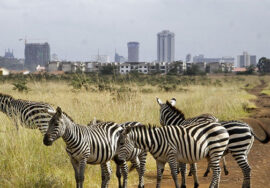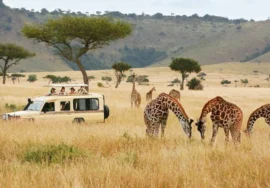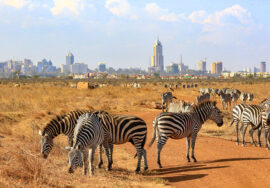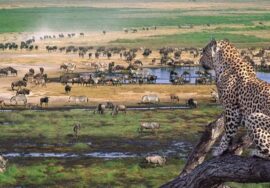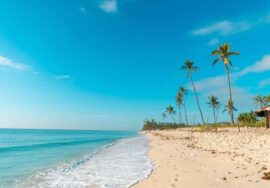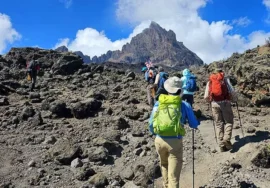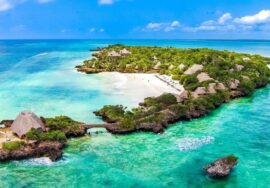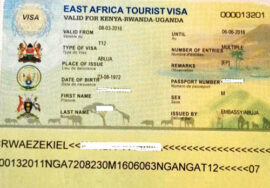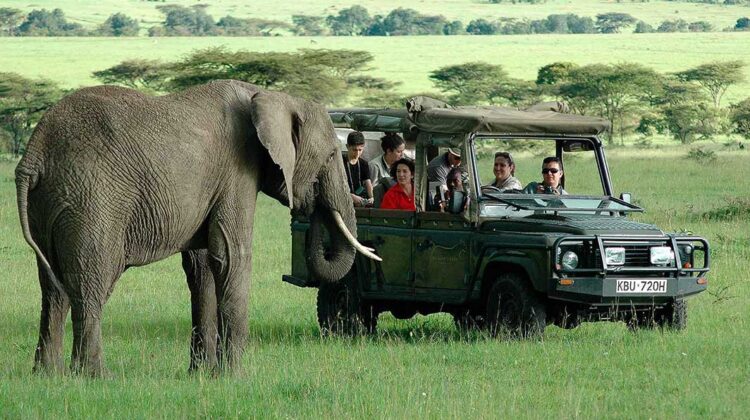
YOUR KENYA SAFARI GUIDE
VISAS
To visit Kenya as a tourist, you need a valid passport. Also, your passport needs to be good for at least six months after the date you arrive in Kenya. Kenya began giving out electronic tourist visas, or “eVisas,” in 2017.
Electronic Application for a Visa
When you want to get an electronic eVisa, please go to www.evisa.go.ke. You can use a card to pay. It costs USD 50 to get a visa, and USD 1 is charged for service. You have to apply for a Kenyan visa at least three months before your trip.
When you apply for a visa, you have to share a picture of your passport along with your passport photo. After you apply, your visa will be sent to you in about five days. When you get to Kenya, you will need to print out a copy of your electronic visa and bring it with you along with your passport. If you are having trouble or have questions about asking for an electronic visa, please get in touch with the Kenyan Embassy in your area.
Other Things to Keep in Mind About Visas:
You will be given a landing card on the plane or at the visa desk when you arrive in Kenya, which you will need to fill out.
You will need to fill out an exit card, which will be given to you at the departure gate when you leave Kenya.
Kenya’s Sabi Sand and Roads
Kenya’s main roads are all paved. But road surfaces are different based on how far away they are and how well they are maintained. The weather, especially rain, can change the state of your road. In National Parks and game areas, most of the roads are easy to get on and off of. Kenyan roads take different amounts of time to get from one travel spot to another, and the times given are only estimates based on traffic and road conditions.
PAYMENT CARDS
MasterCard, Visa, and American Express are the most common credit cards that can be used. Along with credit cards, it’s a good idea to carry cash that can be quickly exchanged. Many stores in the area accept USD as payment, and it’s also easy to swap USD for Kenyan shillings.
GETTING RESORT
You should talk to an expert in medicine, your family doctor, or a licensed vaccination clinic a long time before you go to Kenya to make sure you get all the shots you need.
PLACES TO STAY ON SAFARI
All of the safari hotels, cabins, and tented camps we stay at are carefully chosen based on their quality, comfort, safety, and sense of place. The place where you stay on your safari can give it a unique flavor, excitement, or even romance.
There are four types of options: economy, comfort, improved comfort (for Masai Mara stays), and luxury. Luxury cabins look great in their natural settings, and their rooms have all the comforts you’d expect from a higher-end hotel. Tented camps are built on solid ground and have bathrooms right next to the tents. There may be hot water bottles, a service to warm your bed at night, and coffee, tea, and hot chocolate served in your tent as part of your early morning wake up call. Other than the elevated tree cabins, most of the lodges and camps in the economy, comfort, and luxury prices have pools.
WATER TO DRINK AND BOTTLE DRINK
Do not drink water that comes straight from the tap. You will be given free bottled water in your safari car, which also has a cooler box or fridge for your convenience. During your trip, you can buy soft drinks, beer, and other drinks in bottles at the lodges and camps. All of the places to stay have bars, comfortable rooms, and fireplaces for those cool nights. After a meal, tea or coffee is given.
Suggestions for what to bring on your safari
You should split up your clothes between your bag and your partner’s. This is a safety measure in case a bag gets lost while being shipped. Bring everything important with you in your carry-on luggage, like your passport, visa, insurance, credit cards, cash, and, if needed, medications. Also, you should carry any knowledge you have about certain health conditions with you at all times. You should also carry malaria pills, any life-saving drugs (for diabetics), anything to treat allergies or stomach problems (like Imodium), and painkillers like aspirin with you at all times.
If you have expensive electronics like a camera or computer, you should take good care of them. Please keep in mind that plastic bags like the ones you see in stores are illegal to use, bring into the country, and make. Because of this, we suggest that you don’t use plastic bags to pack your things. Instead, use cloth bags or bags made of something waterproof other than plastic. When you get to Kenya, you will be asked to hand over any visible carry-on gear that is in plastic bags. In this group are plastic bags from “Duty-Free” and others.
Kenyan flights in light planes can only carry up to 15 kilograms (33 lbs.) of luggage, which includes camera and video gear. Any extra luggage you bring can be kept at your hotel in Nairobi until the end of the trip. Extra stuff costs $5 per kilogram, but only if there is room for it and it’s not too heavy. During the trip, the owner is responsible for their own luggage and personal belongings. For your own peace of mind, you should get travel insurance.
HOW TO TAKE PHOTOS ON SAFARI
A digital camera from the last few years is the best way to get great pictures of wildlife and scenery on your Kenya tour. There’s no need to buy the most expensive camera; a camera in the middle price range will work just fine. It takes more practice, attention, and concentration than a fancy camera to take good pictures on safari.
A DSLR (Digital Single Lens Reflex) camera with lenses that can be switched out is a good choice. Lenses between 200 and 400mm are best for taking pictures of wildlife in Africa. If you want to take pictures of landscapes or animals in the wild, you might want to bring a wide-angle lens between 24 and 100mm. You can also take better pictures on safari with a movie camera.
There are no outlets nearby, so bring extra batteries and a charger in case you run out of power. Also, make sure you bring a lot of cleaning supplies, like cleaning cloths and a fan brush, because cameras get dirty quickly on safari. You will also need a lot of flash cards. When you go on a trip, there are so many chances to take pictures! For seeing birds and animals far away, you need a pair of binoculars. The best size is 8/10 x 40, and they should be made well.
List of Camera Gear Suggestions for Safari
Camera
Choice of lenses (ideally between 24 and 100 mm and 200 and 400 mm)
Tools for cleaning lens
Some extra batteries
Charger for batteries
Flash drives
A camera case
Ziplock bags (they don’t let dust in) No plastic bags because they’re illegal in Kenya; you can use cloth bags instead.
Beanbag (to keep the camera steady while taking pictures)
WEATHER IN SAFARI ALL YEAR LONG
A safari trip is a great idea at any time of the year.
January, February, and March (High Season)
For safaris, these three months are great. They are right after the short wet season, and you might see birds that have moved there from Europe. You can still see the animals because the grass is still not too high. You will have many chances to see large groups of elephants.
April and May (not busy)
However, you can still go on safari during this time because it is the long wet season. It rains in bursts in the mornings and afternoons, and they only last a few hours. The rains clean up the land and animals, which often makes the trip experience better.
June
Following the long wet season, June is a good month to go on a safari. There are big groups of zebras that cross from Tanzania to the Masai Mara Reserve before the migration starts in the middle of July.
July through October (busiest time)
Wildlife from Tanzania’s Serengeti comes into the Masai Mara in huge groups. Because weather conditions change over time, it might be hard to say for sure when the movement will begin. We can guess that the great wildebeest migration will start in the Masai Mara around the middle of July. In late September or early October, the wildebeest start their trip back to Tanzania.
November and December (shoulder season)
Kenya is having a short wet season right now. The short rains make the fields and savannah grasses grow again. During this time, the national parks and game areas get their plants back.
WHAT TO WEAR ON A SAFARI
You should bring summer clothes that are relaxed and easy to wash and dry quickly. Choose basic colors that won’t make you feel hot and won’t show off the dust that comes with going on safari. Since it’s cool in the mornings and nights, you should wear layers. A lot of safari hotels and tented camps offer laundry services, so you can get clean clothes whenever you need them.
Since you’ll be in the car for a lot of the safari, wear shoes that are light and comfortable. That’s the style, even in the evening. You’ll be in the sun a lot, and at these heights, it’s easy to get burned quickly, so bring a lot of sunscreen. Most of the places you stay on safari have pools, so don’t forget to bring a swimsuit and a cover-up.
CURRENCY
Kenya’s money is called the Kenyan shilling (KSH). Find out what the rate is now online. A Forex Bureau is where you can swap your foreign cash for shillings. The best rates are usually found at the airport. For tipping and other small costs, small amounts of cash are useful.
You can also use a Visa or MasterCard ATM to get Kenyan shillings. Many places will gladly take cash in USD, EUR, or British pounds. We suggest that you only swap money when you need to. Most of the time, you will get a better deal and find it easier to make small purchases in the local currency. You can easily swap money at any lodge or hotel for a rate that is close to the bank rate. However, the best rates can be found at the Forex Bureaus in Nairobi city or at the airport.
DUTY AND CUSTOMS
The rules for customs are pretty easy to understand. What you can bring into Kenya duty-free: one bottle of liquor, 200 cigarettes, a decent amount of camera gear, film, and a tape recorder.
YOUR SAFARI DRIVER OR GUIDE
Your tour guide or driver will be an important part of your trip. You will spend a lot of time with him as he tells you about the amazing scenery, history, and wildlife of Kenya. Each safari guide is a native Kenyan who knows a lot about things like tribe history, local plants and animals, and the geography of the area. Learn more about our helpful and skilled tour guides here.
ELECTRICITY
Kenya has 220 volts, and the plugs are not the same as those in North America or even Europe. You should bring a set of different foreign adapter plugs and a voltage converter with you when you travel because the outlets may be different. Three square pins make up the most common type of adapter plug.
Important Note About Power
Keep in mind that lodges in game parks may turn off their generators during the day and late at night (11 pm to 6 am), so there will be no power during these times. Please charge your camera batteries during the day when you have time, or bring extra batteries with you.
TAXES AND FEES
The price of the Safari Trips to Kenya tour includes all taxes and service fees related to the meals and lodging, as well as the cost of entering national parks and game areas and using rangers when necessary. When you book or confirm your tour, we’ll be happy to list everything that is included and what isn’t.
AWARDS FOR GAMES
It is against the law in Kenya to sell anything made from wild animals, like rhinoceros horn, elephant hair earrings, crocodile handbags, and more. Also, please keep in mind that selling ivory is against the law in Kenya. Bring goods made from elephant, rhino, or crocodile into the U.S. is against the law.
SAFARI PERKS AND GIFTS
The price of your tour includes all tips for the hotel, lodge, and porters. These tips are called service charges. Some chefs, porters, and other service workers may do an amazing job, and it’s up to you whether to leave a bigger tip.
But it is polite to give your guide or driver a tip when the adventure tour is over. Your opinion on the quality of the work will determine the amount. It’s recommended that each guest pay $10 per day. You can decide how much to pay them, and you can give extra money to staff members who have done extra work. A $1 tip at the bar is acceptable.
INSURANCE FOR TRAVEL
You should always have health insurance because you are responsible for any medical bills that come up. We offer brief evacuation as part of our service through the Flying Doctors Service.
SPEAK WAYS
Kenya has a lot of different areas, and the languages that people speak there are just as lively. English is the official language, and Kiswahili is the national language. Together, they give our diverse country a sense of identity. English is also the language used to teach in all schools. If you learn a few Swahili words ahead of time, they will come in handy when you talk to people there.
DOING THE LAUNDRY
If you’re staying at a safari lodge or camp for more than one night, you can get your clothes washed. You can only get dry cleaning in Nairobi and Mombasa.
MEALS
You will have all of your meals on safari with us, from lunch on the first day to lunch on the last day. During your trip, all of your meals will be taken care of by your lodge or tented camp, or at restaurants along the way. On long drives and full-day drives to see wildlife, packed picnic lunches are given. East Africa’s game lodges and camps serve delicious food because all the meat, veggies, and fruits come straight from farms in the area every day. All dietary needs are met for each person.
FACILITIES FOR MEDICAL
Nairobi has great medical services for people from around the world. Also, most camps and hotels have a doctor on call who knows how to treat common illnesses that travelers get. Make sure that your health insurance covers enough, because once you get back to Nairobi, you will have to pay for any more medical bills.
CARE AND SAFETY
People who come to this place should use common sense just like they would anywhere else. Normal safety measures and care should be taken. If you leave cash, gold, or other valuables in your hotel room, please don’t leave them there. There are safe deposit boxes in every lodge and hotel where you can keep your valuables. In public places, don’t wear jewelry that stands out or leave your purses and cameras unsupervised.
Shopping for a safari vacation
In Nairobi’s shops and markets, you can buy copper jewelry, batik cloth, beads, carvings, Kenyan coffee, and tea. All of these things are reasonably priced and look good. Fine art and handmade goods, gemstones, and jewelry are sold in boutiques. Tanzanite is a locally found semiprecious stone that is sold in jewelry.
Wood is carved into a lot of useful things, from small trinkets like animal head spoons and letter openers to beautiful statues made of ebony. It is also possible to find carved soapstone things like candlesticks, napkin rings, and even full chess sets. There are many colors, sizes, and types of bags made from sisal and baobab. They are more unique than bags sold in the US market.
As tribal artifacts become more popular, East African artisans have made a wide range of beautiful originals and accurate copies. You can find drums, headrests, stools, shields, and necklaces, belts, and bracelets with beads from different parts of the area. Silver, malachite, and amber beads with complex designs can be found in some of the most valuable pieces. You should bring everything you buy with you because the cost of shipping and duty could be more than the item itself. Please keep in mind that freight can cost many hundreds of dollars when you buy big things that need to be shipped.
GETTING TO AND FROM THE AIRPORT
Safari Trips to Kenya offers free transfers from the airport to your hotel when you arrive. When it’s time for you to leave, we’ll take you back to the Nairobi airport. Please let us know about your arrival and departure flights when you book so that the trip goes smoothly.
HOW TO GET TO SAFARI
Our knowledgeable and experienced safari drivers and guides will pick you up at the Nairobi Airport, your hotel in Nairobi, or any other place you choose. After that, you’ll hit the road for your safari or other trips to see places. When you’re done, you’ll be taken back to the place you chose. The quality of the safari car is very important because a lot of the trip is spent driving to and through the parks.
Each of our well-equipped safari vehicles can hold up to six or seven people, so you’re sure to have a window seat and easy access to the pop-up roof. Our Driver/Guides have been trained for safaris, but they also know how to fix things if something goes wrong.
How far and how long you drive on Safari:
Nairobi to Amboseli is about 240 km away. 4 hours
From Amboseli to Lake Naivasha, it takes about 350 km. 6-7 hours
Between Lake Naivasha and Masai Mara is about 250 km. 4 to 5 hours
Masai Mara to Nairobi is about 265 km away. Six hours
About 320 km separate Nairobi and Samburu. 6-7 hours
From Samburu to Lake Naivasha is about 340 km away. 6-7 hours
About 220 km separate Nairobi and Ol Pejeta. 4 hours
About 160 km separate Nairobi from Lake Nakuru. Three hours
About 100 km separate Nairobi and Lake Naivasha. Two hours
Mombasa to Tsavo East is about 120 km away. Three hours
Mombasa to Tsavo West is about 240 km away. 4 hours
Tsavo West to Amboseli is about 100 km away. Two hours
From Amboseli to Masai Mara, it takes about 520 km. 9 hours
Tsavo East to Amboseli is about 300 km away. 5 hours
Please keep in mind that all driving times are estimates and may change based on traffic, weather, and road conditions.
Visit the village of Masai at Masai Mara
If you want to see a Masai village (manyatta), you should talk to your tour guide about it. It is advised that each person give 20 USD to the village chief as a gift. The Masai society still has a lot of the original authenticity and way of life, even though money and other modern influences have been brought in.
FOR LUNCH AND DRINK ON A SAFARIS
The price of your tour covers all of your meals, even packed lunches. You are the one who pays for bottled drinks like beer, soft drinks, wine, and spirits.
DIFFERENCE IN TIME:
Kenya is two hours ahead of GMT.
Nets for mosquitoes
When the sun goes down and the temperature drops, mosquitoes come out. Also, this is when most bites happen. So, we suggest that you wear long pants and a long-sleeved shirt in the evening. It’s also important to use bug spray on any parts of the body that are going to be uncovered. There are mosquito nets over every bed in all safari hotels and camps.
Putting phones and other electrical items to charge
Generators provide power to most hotels and lodges, but they are turned off at 11 p.m. You should remember to bring a small lighter. The plugs have three flat pins and are 240 volts.
GOING IN AND OUT OF HOTELS
You will need to fill out a registration card at the front desk when you check into a hotel or lodge before you can get your keys. Most people check in after 11 am and check out before 10 am. Please pay for any extra drinks from the kitchen and bar when you check out. When you check in at a hotel, lodge, or camp, there is a talk with useful information.
IDEAS FOR PACKING
When you go on safari, don’t bring bright summer clothes because the strong colors can draw flies to some parts of the parks. It doesn’t cost much to do washing by hand, so don’t bring a lot of clothes.
Bring nicer clothes to wear at the hotel and lodge in the evenings. If you need to, long pants and shirts with long sleeves will protect you from the sun and bugs after dark.
A jacket because the morning and evening can get cool.
Summer shoes and socks, like tennis shoes and tights. Mosquitoes will bite you if you walk around barefoot or on your legs at night.
A power adapter with three to four outlets lets you charge a shaver, trimmer, electric toothbrush, and any batteries with just one charger.
An extra battery and a small flashlight
Hat to protect your eyes from the sun
Cover-up and lip balm
For instance, a bug spray
Clippers and a file for nails
WHERE TO KEEP IMPORTANT ITEMS IN YOUR HAND STUFF
Money, tickets, and passports
Sunglasses
Your home medicine (always pack it in your carry-on, in case you lose your bag!)
Pain killers, allergy pills, stomach medicine (Imodium), malaria pills, bandages, and antiseptic wipes are all things that people take on trips.
Binoculars (so you can see that leopard clearly up in the tree!)
You bring more memory cards and cameras than you think you will need. You also bring a battery charger and a bag to keep your cameras safe from the fine, red dust in Africa.
Shoulder bag with a strong zipper and strap. An inside bag or money belt that can be zipped up
A few copies of all of your personal documents, like your driver’s license, passport, visas, flights, travel insurance, vaccination card, international debit cards (Master Card, Visa, etc.), and any credit or debit cards you use abroad
A phone list for stopping lost credit or debit cards right away, as well as insurance
postal addresses of people you want to give cards or letters to
Pens and a notebook
A good book or games to pass the time on the flight

